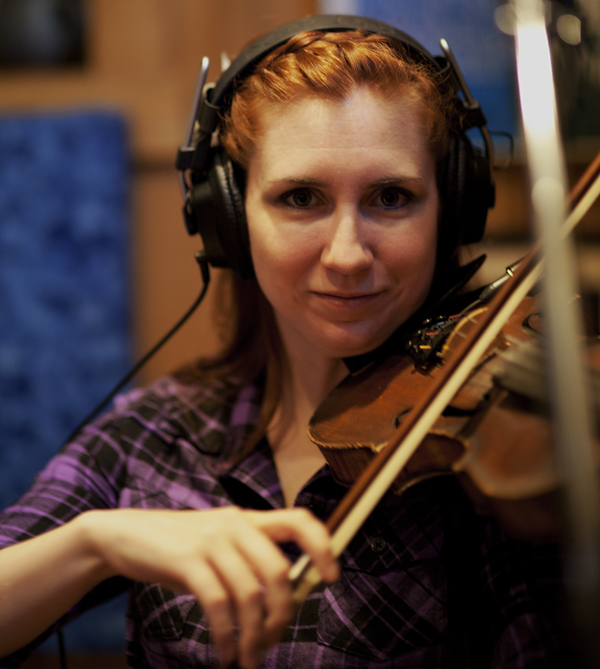 You’ve done it. You recorded your masterpiece with love and care, and listened back to it eagerly only to realize that something is missing. Something… stringy. Strings! Ah-ha! This is a fine realization to have, but what does it mean for you, practically speaking? Because unless you have a symphony orchestra in your back pocket, you will need to employ some audio sleight-of-hand to achieve a full string section sound.
You’ve done it. You recorded your masterpiece with love and care, and listened back to it eagerly only to realize that something is missing. Something… stringy. Strings! Ah-ha! This is a fine realization to have, but what does it mean for you, practically speaking? Because unless you have a symphony orchestra in your back pocket, you will need to employ some audio sleight-of-hand to achieve a full string section sound.
IDENTIFY THE DESIRED EFFECT
First, you need to identify the type of string sound you are after. If the strings on “Eleanor Rigby” set your heart thumping, you might want to consider a string quartet (two violins, one viola, one cello, no doubling). The easiest way to get a full quartet sound is to rehearse your quartet, and record them all together in the same room. Miking each instrument individually will give definition, and bleed-over between mics will add to the fullness. You can get great results layering individual players one at a time as well, just be aware that the players’ inability to breathe together and make eye contact while playing will mean you will have more work during the editing process with things like matching up the tail ends of notes.
STACK STRINGS FOR A LARGER SOUND
Looking for a bigger sound? Start stacking your quartet. Doubling once gives the feel of a nice mid-sized string section, which is usually the right size for most situations. Feel free to stack more than that, but be aware that you may encounter weird phasing issues with stacks in multiples of three. If you have the players available, you can experiment with cramming more bodies in the room as well; keep in mind that the typical ratio of violins to violas and/or cellos is 2:1. So you might have four first violins, four second violins, two violas, and two cellos. In this case, individual miking is kind of redundant- have fun with some great room mics.
Lacking enough players to make up a full quartet complement? Not to worry. I (and many of my string playing colleagues) have perfected the art of the one-woman string section. You’d be amazed how full a two-violin arrangement can sound when it is stacked eight or ten times!
MICS AND MIC PLACEMENT
Now that you have some ideas for the configuration of your players, let’s talk microphones and placement. Every engineer and player will have their favorite mic and placement combination, and if you already know what you like, go with it. I’ve recorded string parts on everything from an SM57 to an Earthworks QTC40 with decent to excellent results. In general, you can’t go wrong with a good condenser mic on stringed instruments. I tend to prefer a Neumann or Earthworks pencil condenser on my particular violin, but I have also had great results using a ribbon mic. Use your ingenuity.
As for placement, I shoot for aiming the mic at the F hole somewhere between 12” and 24” from the instrument, directly in front of the player. Some engineers like to place the mic from behind, having it come over my left shoulder, but I personally don’t like that approach. I find my bow accidentally hits the mic or mic stand a lot more. Don’t be afraid of some space for natural room sounds to develop – the tone of a stringed instrument matures as it goes out into the room; placing a mic too close will get you a lot of bow noise, and a rather shrill tone.
ARRANGING FOR STRINGS
Now that you have your players and your technical aspects figured out, let’s talk about the arrangement itself. A lot of people (including string players) fall into the trap of thinking that a string section only plays whole notes. This is an understandable mistake, since the goal of a string section is to support the vocalist, not overpower him or her. However, there are many other types of effects you can create with strings that are supportive, but go beyond the whole note. Trills and tremolos will add shimmer, while pizzicato (plucking the string instead of bowing) can be playful. Don’t forget that you can use accents and staccato marks to great effect as well, in contrast to using slurs (two or more notes in the same bow) for smoothness. Your players will thank you for your creativity!
So there you have it, recording strings in a nutshell. The bottom line is, no matter what your set-up or budget, great string parts are easily accessible. So go forth and record stringy goodness!
–Sarah Wilfong is an accomplished violinist, touring musician and educator (editor’s note – not to mention one hell of an Irish fiddler) based out of Nashville. She can currently be seen on the road performing with Mustang Sally, and is in the process of scoring a short film project and recording her second solo album. Visit www.sarahwilfong.com for more info.
photo by Ben Grimes
